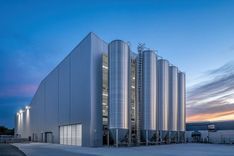Pre-engineered buildings (PEBs) have become a cornerstone for micro, small and medium enterprises (MSMEs) in India, offering rapid construction, cost-effectiveness and design flexibility. However, the success of a PEB project heavily relies on the quality of materials used, particularly the steel grades. Selecting the appropriate steel grade is crucial to ensure structural integrity, longevity and compliance with safety standards. This article delves into the significance of steel grades in PEBs and provides guidance for MSMEs on making informed decisions.
Understanding steel grades in PEBs
Steel grades are classifications that denote the mechanical properties and chemical composition of steel. In India, the Bureau of Indian Standards (BIS) has established IS 2062 as the benchmark for hot-rolled medium and high tensile structural steel. The most commonly used grades in PEBs are E250 and E350, where the numeral indicates the minimum yield strength in megapascals (MPa). For instance, E250 has a minimum yield strength of 250 MPa, suitable for general structural applications, while E350, with 350 MPa, is preferred for structures requiring higher load-bearing capacity. Additionally, sub-qualities like BR (tested at room temperature) and BO (tested at 0°C) provide insights into the steel's impact resistance, essential for structures exposed to varying temperatures.
Verifying steel grade authenticity
To ensure the steel used in a PEB meets the required standards, MSMEs should:
Request mill test certificates (MTCs) - These documents provide detailed information on the chemical composition and mechanical properties of the steel batch.
Check for BIS certification - Ensure the steel carries the IS 2062 mark, indicating compliance with Indian standards.
Engage reputable suppliers - Partnering with established steel manufacturers or distributors reduces the risk of procuring substandard materials.
Conduct third-party testing - For critical projects, independent testing can validate the steel's properties.
Common pitfalls in steel grade selection
MSMEs often encounter challenges such as:
Misinterpretation of grade designations - Confusing E250 with E350 can lead to using inappropriate materials.
Overlooking sub-quality requirements - Neglecting the BR or BO designations may result in structures ill-equipped for their environmental conditions.
Prioritising cost over quality - Opting for cheaper, uncertified steel can compromise structural integrity and safety.
Best practices for MSMEs
To mitigate risks and ensure optimal performance:
Conduct thorough needs assessment - Understand the structural requirements and environmental conditions of the project.
Consult with structural engineers - Professional input can guide appropriate steel grade selection.
Stay updated with standards - Regularly review BIS updates to remain compliant with the latest specifications.
Invest in quality assurance - Implementing stringent quality checks during procurement and construction phases safeguards against material failures.
Why steel grade selection matters
The choice of steel grade directly influences the performance and safety of a PEB. Using a lower-grade steel in a high-stress application can lead to structural failures, while opting for a higher-grade steel unnecessarily can inflate costs. For example, E250 is adequate for light structures like warehouses, whereas E350 is more suited for heavy-duty applications such as industrial plants. Moreover, the sub-quality designation ensures that the steel can withstand specific environmental conditions, with BO grades being essential for colder regions.
Conclusion
The selection of the correct steel grade is a critical decision in the construction of pre-engineered buildings. For MSMEs, understanding the nuances of steel grades, verifying authenticity and adhering to best practices can lead to structures that are safe, durable and cost-effective. By prioritising quality and compliance, MSMEs can ensure the long-term success of their infrastructure investments.




 +91 7208055523
+91 7208055523
 Help & support
Help & support
